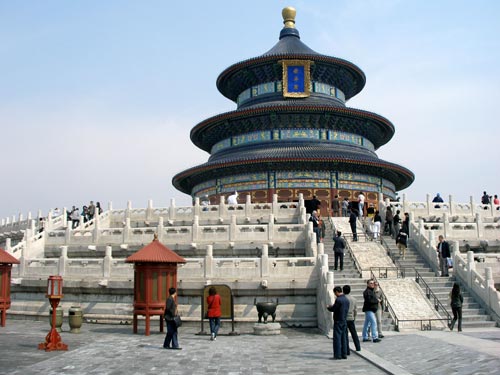
Again we see the three-level terraces of earth, man and finally heaven. The lower courtyard is square, and the elevated temple is round. The roofing is made of 50,000 blue glazed tiles, the color of the sky.
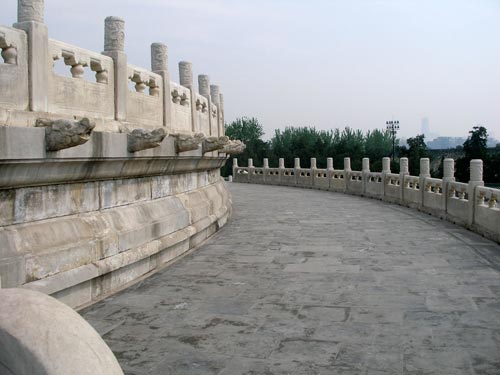
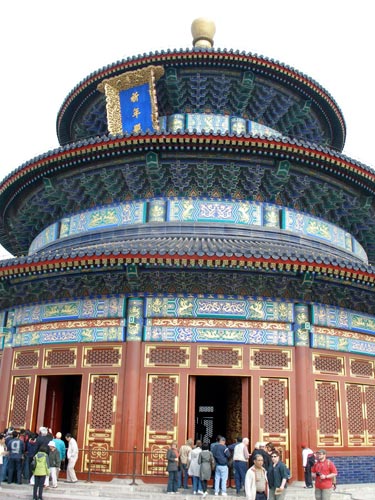
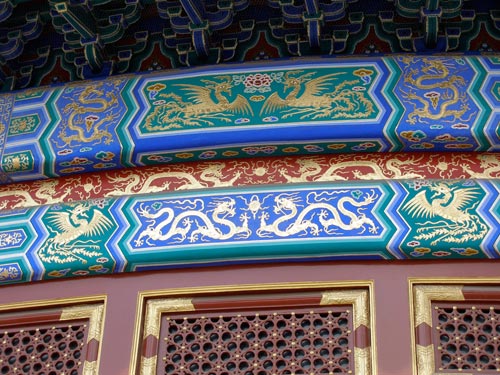
Two common images are of the dragon and the phoenix.
The Chinese dragon is traditionally the embodiment of the concept of yang (male) and associated with the weather as the bringer of rain and water. Its female counterpart is the Fenghuang (usually translated as a phoenix).
Yin and yang are complementary opposites within a greater whole. Everything has both yin and yang aspects, which constantly interact, never existing in absolute stasis. It is a way of describing the interactions and interrelations of the natural forces that occur in the world. It is unity in duality.
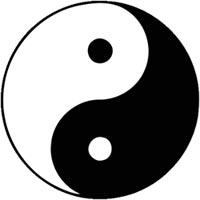
The Taijitu (roughly translated as Diagram of Ultimate Power) refers to any of the Chinese symbols for the concept of yin and yang. The most recognized one is composed of two teardrop-shaped curves. Yin is black, female, receptive, yielding, negative, and nurturing. It is associated with night, valleys, rivers, streams, water, metal, and earth. Yang is white, male, active, dominating, positive, and initiating/creating. It is associated with day, mountains, hills, fire, wood, and air.
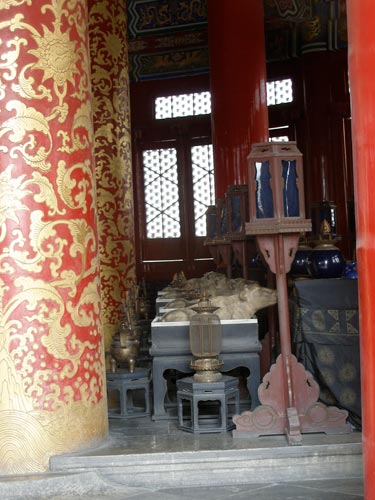
A row of cows
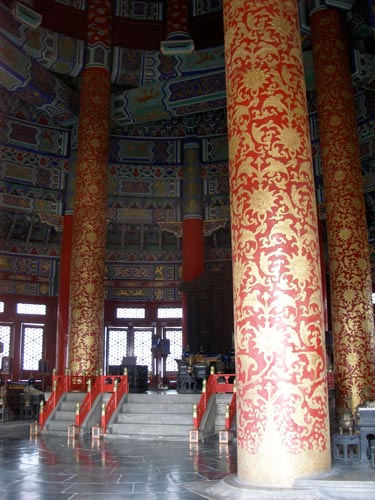
Despite its size, only 28 massive wooden pillars support the entire structure (the ancient Chinese believed that there were 28 constellations that made up the sky). The four large pillars in the center are known as the Dragon Well Pillars, each one representing one of the four seasons.
In the middle of each three-tiered flight of stairs, there is a giant marble ramp carved with cloud, dragon and phoenix designs.
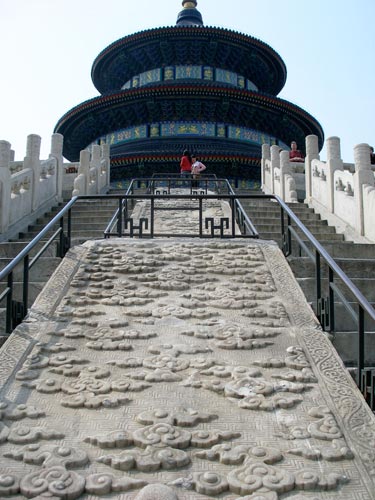
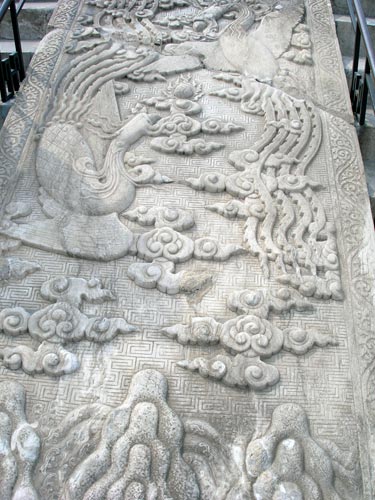
Two phoenixes fly through the clouds high above some mountains.
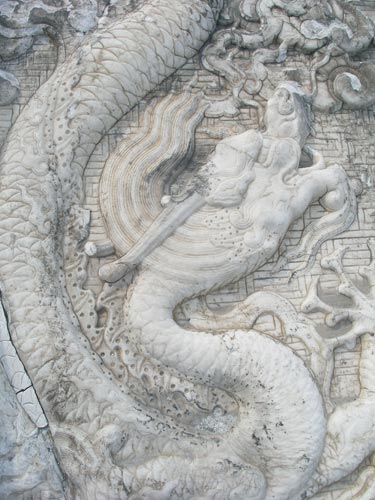
A dragon
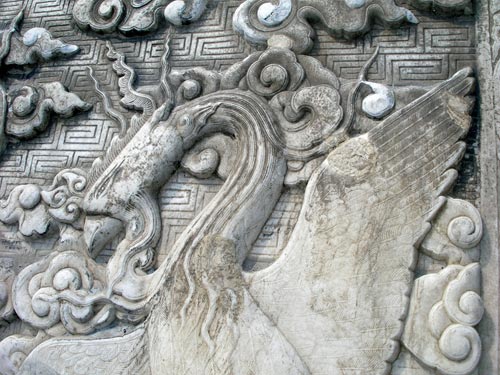
Although called a Chinese phoenix, the Fenghuang seems to have no connection with the Western phoenix, which derives from Egyptian mythology.
Fenghuang are mythological birds of East Asia that reign over all other birds. The males are called Feng and the females Huang. In modern times, however, such a distinction of gender is often no longer made and the Feng and Huang are blurred into a single feminine entity so that the bird can be paired with the Chinese dragon, which has male connotations. This King of Birds came to symbolize the empress when paired with a dragon, which represented the emperor.
All the buildings within the temple have special dark blue roof tiles, representing heaven.
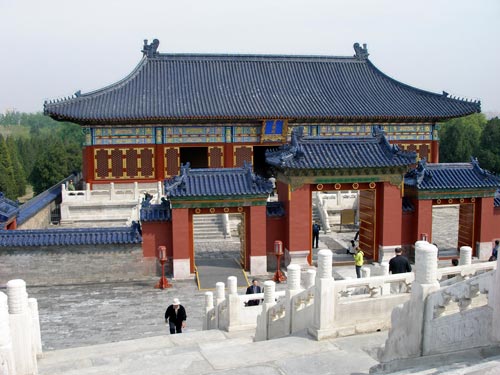
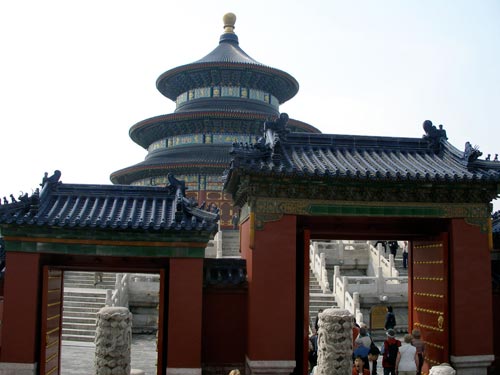
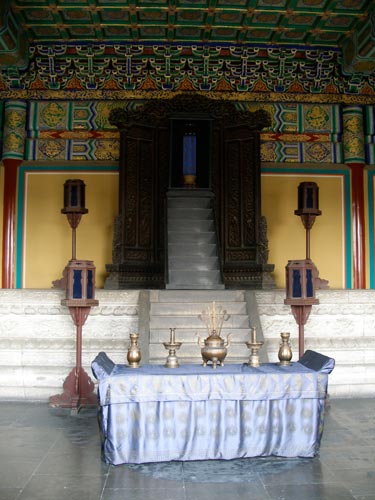
Gate and Imperial Walkway Bridge

The Gate of Prayer for Good Harvest leads to the next set of temples, the Imperial Vault of Heaven and then the Circular Mound Altar.
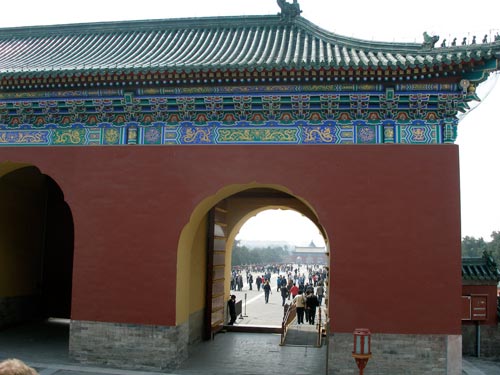
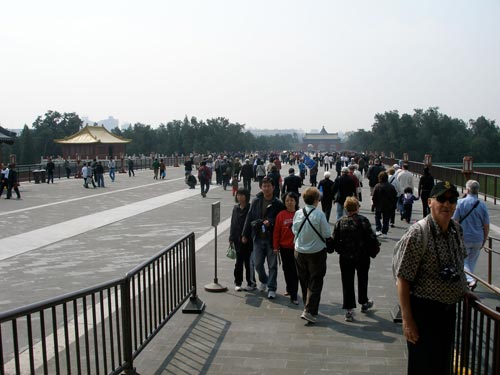
The walkway is flanked by centuries-old cypress trees. In the far distance is Chengzhen (Adopting Fidelity) Gate.

The Danbiqiao (Imperial Walkway Bridge, Vermilion Steps Bridge, or Sacred Way) is a 1,180-foot raised walkway. The brick patterns divide it into three distinct paths: the central widest one (Heavenly Thoroughfare) was reserved exclusively for the gods, the east one (Imperial Walk) was for the emperor, and the west one was for the empress and court officials.
It is called a bridge because at one point there was a tunnel under it. It was reserved for sacrificial oxen and sheep who were slaughtered at a slaughterhouse about 500 meters away and brought here for sacrifice.

